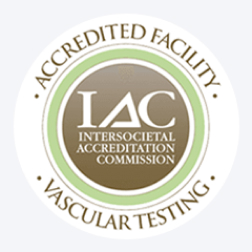When it comes to vascular health, knowing your options can feel overwhelming, but it’s key to making informed choices. Two common procedures, atherectomy and angioplasty, both aim to restore blood flow and improve your quality of life, yet they work in very different ways.
Atherectomy carefully removes plaque buildup from your arteries, making it a go-to option for hard, calcified blockages. Angioplasty, on the other hand, uses a small balloon to widen the artery and is often paired with a stent, making it ideal for softer plaque.
So how do you decide which procedure is right for you? Factors like the type of plaque, blockage location, and your overall health all come into play. Understanding these differences gives you the confidence to choose the treatment that best fits your needs.
In this article, we’ll break down atherectomy vs. angioplasty, highlighting the benefits, considerations, and what to expect so you can navigate your vascular care with clarity and confidence.
Understanding Vascular Blockages and Cardiovascular Interventions
Vascular blockages occur when arteries narrow due to plaque buildup. This restricts blood flow and can cause serious health issues.
Plaque consists of fat, cholesterol, and other substances. Over time, it hardens and narrows the arteries, making treatment necessary.
Cardiovascular interventions aim to restore blood flow and prevent complications. These procedures play a vital role in managing vascular health.
Choosing the right intervention depends on several factors. These include the plaque’s nature, location, and severity.
Understanding these aspects helps patients collaborate with healthcare providers. Together, they can determine the most effective treatment plan. This ensures optimal outcomes and improved vascular health.
What Is Angioplasty? Procedure, Benefits, and Risks
Angioplasty is a common minimally invasive procedure. It helps open blocked or narrowed arteries, improving blood flow and reducing symptoms like chest pain.
During angioplasty, a small balloon is used. This balloon is inserted into the artery and inflated at the blockage site, widening the artery.
The benefits of angioplasty include quick recovery and significant symptom relief. It helps improve quality of life for patients with various vascular conditions.
However, like any medical procedure, angioplasty comes with risks. These may include bleeding, infection, or artery damage, although such complications are rare.
How the Angioplasty Procedure Works
Angioplasty begins with a tiny incision, often in the groin. A catheter with a deflated balloon is carefully guided to the blockage.
Once there, the balloon inflates, pressing plaque against the artery wall. This clears the passage for blood to flow more freely.
Here’s a summary of the angioplasty procedure:
- Incision: A small cut is made to access the artery.
- Catheter insertion: A catheter is threaded through the artery.
- Balloon inflation: The balloon expands to open the artery.
- Catheter removal: The catheter and balloon are withdrawn post-expansion.
Ideal Candidates for Angioplasty
Angioplasty is suitable for many patients. Ideal candidates often include those with heart-related artery blockages.
Here are some factors making angioplasty more appropriate:
- Coronary artery disease: Patients with blocked heart arteries.
- Mild to moderate blockages: Effective in less severe cases.
- Symptoms: Those experiencing chest pain or fatigue related to blockages.
Recovery After Angioplasty
Recovery from angioplasty is typically swift. Most patients resume normal activities within a few days.
Post-procedure, follow-up care is crucial. It helps ensure the artery remains open and functioning well.

What Is Atherectomy? Procedure, Benefits, and Risks
Atherectomy is another type of minimally invasive vascular procedure. It removes plaque from artery walls, making it effective for treating peripheral artery disease.
This procedure is particularly useful when plaque is calcified or hardened, which makes it difficult to treat through angioplasty alone. By physically removing the plaque, atherectomy improves blood flow and relieves associated symptoms.
Benefits of atherectomy include its ability to target tough blockages and its potential for combining with other treatments, like stenting. Patients often experience quick recovery times and improved mobility post-procedure.
Despite its advantages, atherectomy has some associated risks. These can include bleeding, artery damage, or infection at the insertion site, though these are typically rare.
Here’s a breakdown of atherectomy procedure essentials:
- Plaque removal: Direct removal of hardened deposits.
- Combination treatment: Often used with other interventions.
- Hospital setting: Performed under local anesthesia.
- Quick recovery: Patients typically resume activities soon after.
How the Atherectomy Procedure Works
The atherectomy procedure starts with a small incision to access the affected artery. A specialized catheter with a cutting device is then inserted.
This device removes the plaque from the artery walls, allowing blood to flow more freely. The removed plaque is captured within the device for safe removal.
The procedure involves:
- Entry point: A small incision to reach the artery.
- Catheter insertion: Equipped with a rotating blade or laser.
- Plaque capture: Plaque is collected for removal.
- Completion: The catheter is retracted after clearing blockages.
Ideal Candidates for Atherectomy
Atherectomy is suitable for specific cases. It’s often chosen for patients with peripheral artery disease, especially if the plaque is heavily calcified.
Recovery After Atherectomy
Recovery from atherectomy is generally swift. Most patients return to routine activities shortly after the procedure.
Close follow-up care is necessary to maintain artery health. Monitoring ensures the procedure’s success and manages any potential issues.
Atherectomy vs Angioplasty: Key Differences and Similarities
Understanding the differences between atherectomy and angioplasty is crucial in determining the right treatment. Both aim to restore blood flow but achieve this through different methods.
Atherectomy physically removes plaque, making it effective for tougher, calcified blockages. In contrast, angioplasty uses a balloon to compress plaque, best suited for softer deposits.
While both procedures are minimally invasive and typically performed under local anesthesia, their approaches differ. Atherectomy involves cutting tools, whereas angioplasty often includes the placement of a stent to keep the artery open.
Key differences and similarities between the procedures include:
- Type of plaque: Atherectomy for hard plaque, angioplasty for soft.
- Technique: Atherectomy removes plaque; angioplasty compresses it.
- Procedure setting: Both are done in hospitals or outpatient centers.
- Recovery time: Both offer short recovery times, helping patients quickly return to daily activities.
Choosing the Right Procedure: Factors to Consider
Selecting between atherectomy and angioplasty requires careful evaluation of several key factors. Each patient’s situation is unique, making it essential to consider multiple aspects before deciding.
Factors influencing the choice include the type and location of the arterial blockage, the patient’s overall health, and any existing conditions. It’s important to weigh the potential benefits against the risks associated with each procedure.
When discussing options with your healthcare provider, be sure to consider:
- Type and severity of blockage: Is the plaque hard or soft?
- Existing health conditions: Does the patient have other medical concerns?
- Patient goals: What are the desired outcomes post-procedure?
These considerations will help guide you and your healthcare team in choosing the most effective treatment option for your vascular health.
Empowering Your Vascular Health: Next Steps and Support
Deciding between atherectomy and angioplasty can feel overwhelming, but you don’t have to face it alone. Partnering with a trusted healthcare provider is key, they can help you understand your options and create a treatment plan tailored to your unique needs and goals. Maintaining a heart-healthy lifestyle and staying on top of recommended medical appointments also play an important role in supporting your vascular health.
At United Vein & Vascular Centers, our team is here to guide you every step of the way. Schedule a consultation today to discuss your treatment options and take proactive steps toward a healthier tomorrow.
Często zadawane pytania
Atherectomy removes plaque from artery walls, while angioplasty widens arteries using a balloon, often with a stent. Your doctor will recommend the best option based on plaque type and blockage location.
The right procedure depends on factors like the type of plaque, the location of blockages, and your overall health. A consultation with a vascular specialist at United Vein & Vascular Centers can guide your decision.
Recovery varies, but most patients experience minimal downtime and follow-up care focused on lifestyle adjustments, monitoring blood flow, and attending recommended medical appointments.


